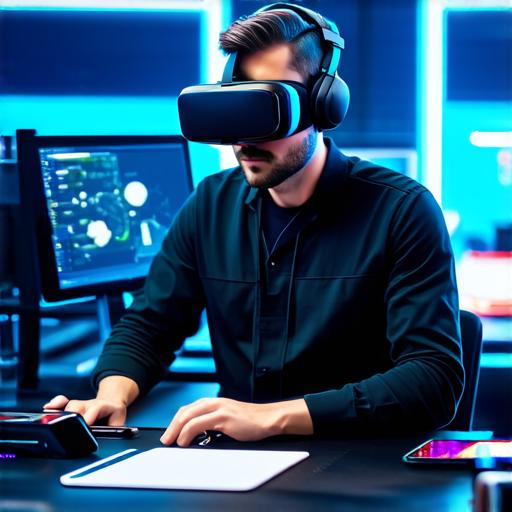Augmented reality (AR) is becoming an increasingly popular technology that allows users to interact with digital content in the real world. This technology has countless potential applications, from gaming and entertainment to education and healthcare.
Understanding AR Development
AR development involves several stages, including conceptualization, design, programming, testing, and deployment. Each stage of the process requires a different set of skills and knowledge, so it’s important to have a clear understanding of what each stage entails.
Conceptualization
The first step in AR development is to come up with an idea for an AR experience. This could be anything from a simple game or interactive product demonstration to a more complex educational or training application. It’s important to have a clear understanding of the target audience and what they hope to gain from the AR experience.
Design
Once you have a concept for your AR experience, it’s time to start designing the user interface (UI) and user experience (UX). This involves creating wireframes and prototypes to test different design options and ensure that the final product is intuitive and easy to use. It’s important to consider factors such as lighting conditions, environment, and device compatibility when designing an AR experience.
Programming
AR development requires programming skills in languages such as Unity3D, Unreal Engine, or Vuforia. These platforms provide tools for creating AR applications that can be deployed on a variety of devices, including smartphones, tablets, and wearables. It’s important to have a strong understanding of computer graphics and programming concepts to create an engaging and interactive AR experience.
Testing
Once the AR application is built, it’s important to test it thoroughly to ensure that it works as intended. This involves testing the application in different environments and lighting conditions to ensure that it remains usable and functional. It’s also important to test the application on a variety of devices to ensure compatibility.
Deployment
Finally, once the AR application has been tested and refined, it’s time to deploy it to the desired platform or device. This involves uploading the application to an app store or distributing it directly to users. It’s important to have a marketing plan in place to promote the AR application and attract users.
Real-World Examples of AR Development
One of the most well-known examples of AR development is the popular game Pokémon Go, which was released in 2016. The game uses AR technology to allow players to capture and train virtual creatures in real-world environments. This game has been downloaded millions of times and has generated significant revenue for its developers.
Another example of AR development is the use of AR in healthcare applications. For instance, surgeons can use AR technology to visualize patient anatomy during surgery, allowing them to make more precise incisions and reducing the risk of complications. Additionally, AR applications can be used to help patients with chronic pain manage their conditions by providing visualizations of their pain levels and offering guided relaxation techniques.
FAQs

1. What tools are needed for AR development?
To develop an AR application, you will need tools such as Unity3D, Unreal Engine, or Vuforia. These platforms provide a variety of features and tools for creating AR applications that can be deployed on a variety of devices.
2. Can AR be used in education?
Yes, AR technology has many educational applications, including providing interactive visualizations of complex concepts and offering immersive learning experiences. For example, AR can be used to teach anatomy by allowing students to explore the human body in 3D.
